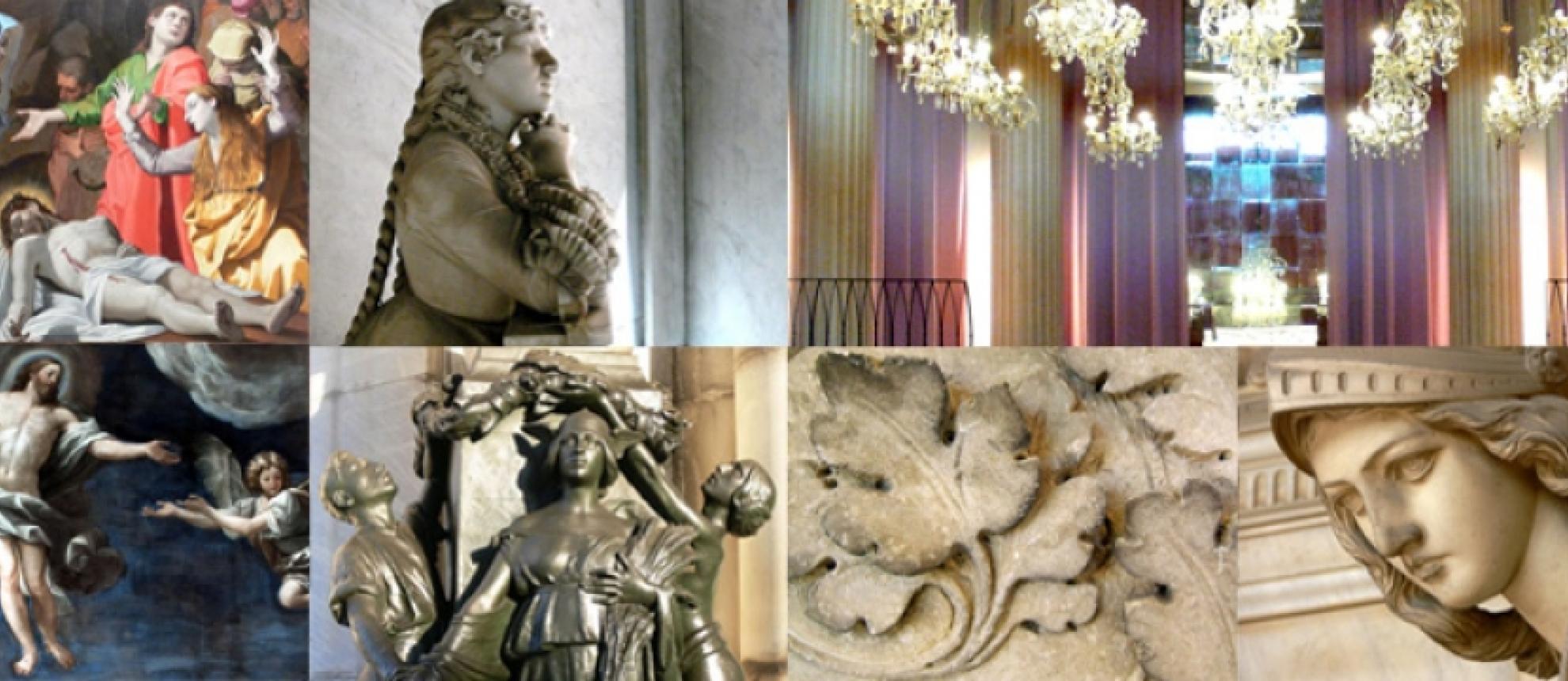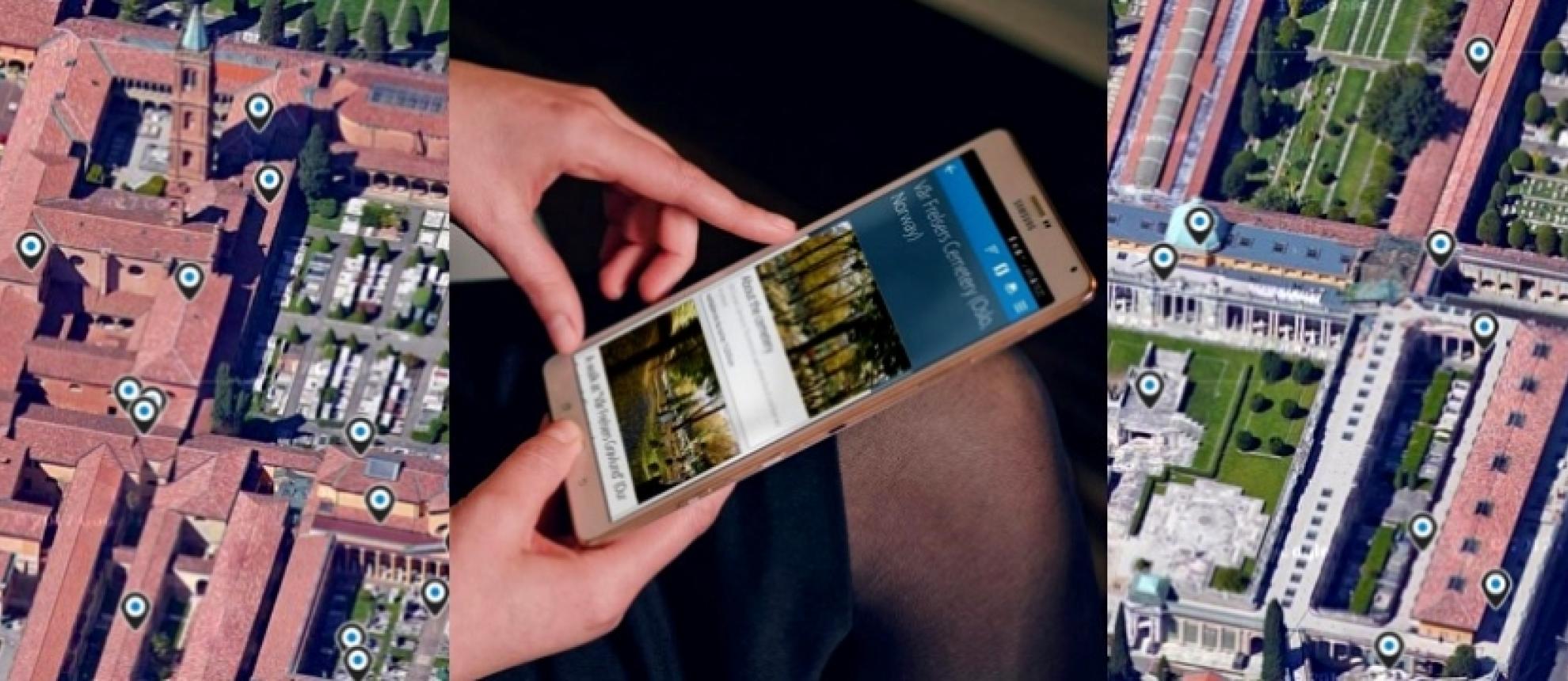The cemetery was established in 1801 using the former buildings of the Carthusian monastery, which was built starting from 1334 and closed by Napoleon in 1796. The Church of St. Jerome testifies to the lost wealth of the monastery. Even though nowadays it appears fully integrated into the urban fabric, it was chosen in 1801, as it became usual for the other European cemeteries after 1804. The first works were readjustments of the old monastery spaces, whilst from 1833 the building programme was the result of a more complex structure, with exedrae, biaxial elements, symmetries aimed at a greater monumental ambition. Between 1816 and 1834 the main rooms of the Certosa were built: in 1816 the ’Hall of the Graves’, in 1833, the ’Arcade of the Graves’ and, immediately after the ‘Colombario’, an impressive building with three naves inspired by the Roman thermal architecture. In 1860 the previous ‘Chapel of the Suffrages’ was turned into the ‘Gallery of Angels’. In this period was discovered an Etruscan Necropolis (between 6th and 5th century b. C.) under the structures of the monastery. With these excavations began the discovery of the ancient history of Bologna. A different interpretation of the spaces started at the beginning of the twentieth century, according to a more monumental and rhetorical viewpoint: significant examples of this period are the ’Sixth Cloister’ with the ‘World War I Memorial’, the ‘Eighth’ and the ‘Ninth Cloister’, with the annexed galleries.
Over 80 painters, sculptors and architects work in to the cemetery, creating an open museum of XIX and XX century. In the Certosa cemetery are buried many important people for town's and italian history, including the statesman Marco Minghetti, painters Giorgio Morandi and Bruno Saetti, the Nobel poet Giosue Carducci, the writer Riccardo Bacchelli, the opera singer Carlo Broschi Farinelli, the music composer Ottorino Respighi, the polish army general Joseph Grabinski and prime minister Taddeus Matuszevic, the founders of Maserati, Ducati and Weber industries, the publisher Nicola Zanichelli.
The Certosa was the destination of the visitor in Bologna throughout the nineteenth century: Lord Byron, Jules Janin, Charles Dickens, Theodor Mommsen and Sigmund Freud write about their visit in the cemetery.
Discover the Certosa monumental cemetery
Il sito in lingua inglese è stato realizzato grazie al contributo di BSC - Bologna Servizi Cimiteriali; con la collaborazione dei volontari dell'Associazione Amici della Certosa e degli studenti del Liceo Ginnasio Luigi Galvani e del Liceo Scientifico Augusto Righi.


